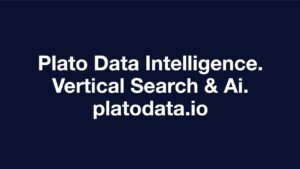Connected farming, also known as precision agriculture, is a rapidly growing trend in the agricultural industry. It involves the use of technology such as sensors, drones, and software to monitor and manage crops and livestock. By using connected farming, agricultural manufacturers, customers, and the environment can all benefit.
For agricultural manufacturers, connected farming can help to increase efficiency and reduce costs. By using sensors and drones to monitor crops and livestock, manufacturers can quickly identify problems and take corrective action. This can help to reduce the amount of time and money spent on manual labor. Additionally, connected farming can help to reduce the amount of water and fertilizer used, which can save manufacturers money.
For customers, connected farming can help to ensure that they are getting the highest quality products. By using sensors and drones to monitor crops and livestock, manufacturers can quickly identify any issues that may affect the quality of their products. This can help to ensure that customers are getting the freshest and safest products available. Additionally, connected farming can help to reduce the amount of food waste, as it allows manufacturers to quickly identify any issues that may lead to spoilage or contamination.
Finally, connected farming can benefit the environment by reducing the amount of water and fertilizer used. By using sensors and drones to monitor crops and livestock, manufacturers can quickly identify any issues that may lead to overuse of water or fertilizer. This can help to reduce the amount of runoff into rivers and streams, which can help to protect the environment. Additionally, connected farming can help to reduce the amount of emissions produced by agricultural machinery, which can help to reduce air pollution.
In conclusion, connected farming has many benefits for agricultural manufacturers, customers, and the environment. By using sensors and drones to monitor crops and livestock, manufacturers can quickly identify any issues that may affect the quality of their products or lead to overuse of water or fertilizer. This can help to ensure that customers are getting the freshest and safest products available, while also helping to reduce food waste and emissions.
- SEO Powered Content & PR Distribution. Get Amplified Today.
- Platoblockchain. Web3 Metaverse Intelligence. Knowledge Amplified. Access Here.
- Source: Plato Data Intelligence: PlatoAiStream
- :is
- a
- Action
- Additionally
- affect
- Agricultural
- agriculture
- AIR
- Air pollution
- AiWire
- All
- allows
- amount
- and
- ARE
- AS
- available
- benefit
- benefits
- by
- CAN
- conclusion
- connected
- Costs
- crops
- Customers
- Drones
- efficiency
- Emissions
- ensure
- Environment
- farming
- food
- For
- Freshest
- getting
- Growing
- help
- helping
- highest
- identify
- in
- Increase
- industry
- IOT / Web3
- issues
- IT
- known
- labor
- lead
- machinery
- manage
- manual
- Manufacturers
- many
- money
- Monitor
- of
- on
- plato
- Plato AiWire
- Plato Data Intelligence
- PlatoData
- Pollution
- Precision
- problems
- Produced
- Products
- protect
- quality
- quickly
- rapidly
- reduce
- reducing
- safest
- Save
- sensors
- Software
- spent
- streams
- such
- Take
- Technology
- that
- The
- their
- time
- to
- Trend
- use
- Waste
- Water
- Web3
- which
- while
- zephyrnet









